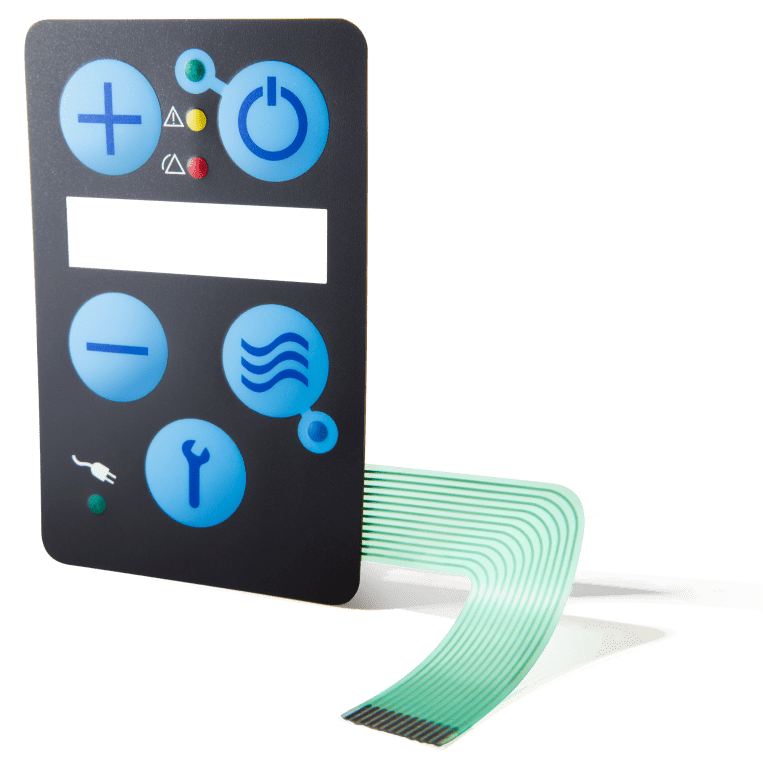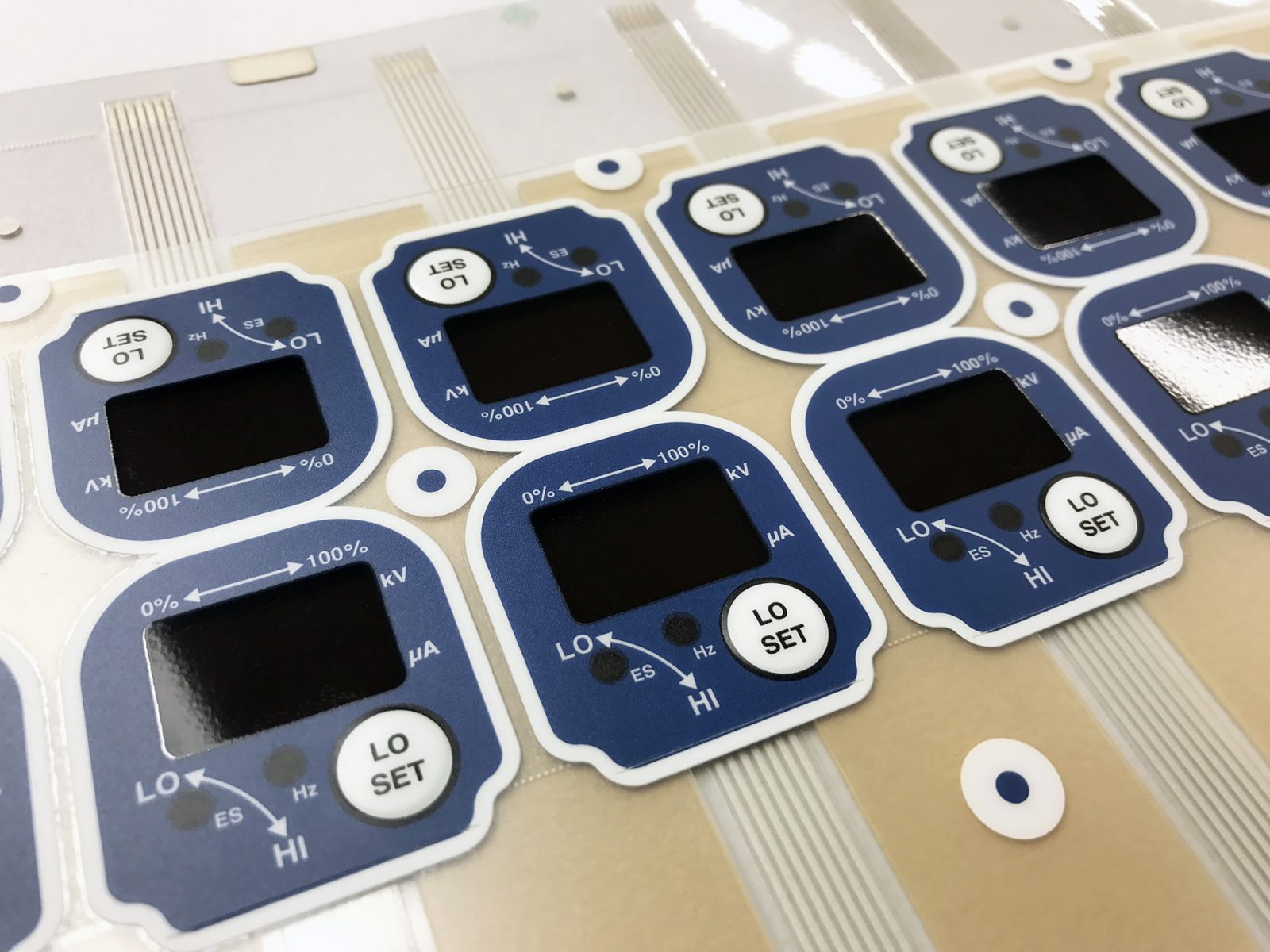Discover the Future of Control Interfaces: Why Membrane Switches Are Getting Popularity
As industries significantly prioritize easy to use and efficient control user interfaces, membrane buttons are becoming an engaging option that combines performance with design adaptability. Their durability and portable nature make them especially matched for a range of applications, from healthcare to customer electronic devices. With the increase of clever innovation and sustainability concerns, the advancements and capabilities bordering membrane changes warrant more detailed evaluation. What details advantages do they supply that could redefine our interactions with innovation in the coming years?
Comprehending Membrane Layer Buttons
Membrane layer buttons are indispensable parts in modern-day digital gadgets, serving as interfaces between machines and customers. These buttons are composed of several layers, usually including a graphic overlay, a spacer layer, and a circuit layer.

Durability is an additional essential feature, as membrane layer switches can be made to withstand environmental variables such as dampness, dust, and chemicals. This strength makes them optimal for applications in harsh problems. Overall, recognizing the structure and feature of membrane layer switches is crucial for appreciating their duty in the evolution of customer interfaces in today's technology-driven world.
Trick Advantages of Membrane Layer Switches
Using a series of benefits, membrane layer switches have come to be a preferred selection in various applications (Membrane Switches). One of the key advantages is their small layout, enabling suppliers to optimize area in tools without jeopardizing functionality. Membrane buttons are light-weight, which is particularly important in mobile digital devices

In addition, these switches offer exceptional longevity. Constructed from versatile products, they are immune to dirt, dampness, and a range of environmental factors, making them suitable for severe conditions. This toughness usually converts right into a much longer life-span contrasted to typical mechanical buttons.
Moreover, membrane switches enable smooth assimilation of graphics and icons, supplying visual versatility and improving individual experience. Personalization choices are considerable, making it possible for brand names to produce special interfaces that align with their item identification.
An additional secret advantage is their simplicity of cleansing and maintenance. The flat surface of membrane layer switches over protects against the buildup of dirt and gunk, making them perfect for sanitary environments. Last but not least, membrane layer buttons are cost-efficient, as they can be created in high volumes at lower prices, making them easily accessible for a vast array of sectors. These elements jointly contribute to their increasing appeal in modern control user interfaces.
Applications Across Industries

A myriad of markets are increasingly embracing membrane layer switches because of their versatility and capability. These control user interfaces are particularly common in the auto industry, where they are made use of in dashboards and infotainment systems, giving a sleek and easy to use interface. In the clinical area, membrane changes promote the operation of diagnostic devices and person monitoring systems, making certain reliability and simplicity of usage in essential situations.
Furthermore, the customer electronic devices industry take advantage of membrane buttons in tools such as microwaves and remote controls, permitting structured style and boosted durability. Membrane Switches. The aerospace industry likewise uses membrane layer buttons in cabin controls, where room restraints demand compact and efficient layout remedies
Moreover, the industrial sector employs membrane layer buttons in equipment control board, supplying strength versus extreme atmospheres and ensuring functional performance. Retail settings have actually accepted membrane switches in point-of-sale systems, enhancing user communication while keeping visual charm.
Design Trends in Membrane Layer Buttons
Progressing together with technological advancements, layout fads in membrane layer switches are helpful resources increasingly concentrated on improving individual experience and aesthetic allure. Modern membrane layer switches are being designed for simpleness and user-friendly use, permitting customers to navigate my explanation interfaces easily. This shift in the direction of user-centric style emphasizes responsive comments, guaranteeing that users obtain instant verification of their actions.
Additionally, adjustable graphics and shades are becoming conventional features in membrane layer switch layouts. This flexibility enables suppliers to develop tailored user interfaces that straighten with branding and details user demands. The incorporation of backlighting is an additional popular fad, as it not only boosts exposure in low-light problems but additionally adds a visually striking component to the general layout.
Additionally, the fad towards slim and light-weight products is acquiring grip, enabling sleeker styles that can flawlessly integrate right into numerous applications. This shift not only boosts looks yet also adds to the total functionality and longevity of the switches. Environmentally friendly products are significantly being made use of, reflecting a broader motion in the direction of sustainability in item layout. These layout fads collectively underscore the growing significance of integrating type and feature in the growth of membrane layer buttons, inevitably improving the customer experience.
Future Outlook for Control Interfaces
The future of control user interfaces is positioned find more information for considerable improvement as emerging innovations continue to reshape customer communications across different devices. The integration of innovative products, such as versatile electronics and conductive inks, will certainly improve the flexibility and functionality of membrane layer buttons, making them increasingly adaptable to a variety of applications. In addition, the surge of the Internet of Points (IoT) will drive demand for even more user-friendly, user-friendly user interfaces that can effortlessly integrate with clever gadgets.
As expert system and artificial intelligence evolve, regulate interfaces will likely incorporate even more personalized attributes, allowing customers to communicate with tools in manner ins which are tailored to their routines and preferences (Membrane Switches). This change towards user-centric style will certainly position membrane layer switches as a principal in the market, particularly in sectors like health care, auto, and consumer electronic devices
Furthermore, the push for sustainability will certainly urge manufacturers to check out green materials and production techniques, guaranteeing that the future of control user interfaces straightens with environmental considerations. In general, as innovation proceeds to breakthrough, membrane switches will become progressively advanced, leading the means for cutting-edge control remedies that enhance user experience and operational efficiency across diverse industries.
Conclusion
In conclusion, the raising adoption of membrane switches over highlights their relevance in the development of control user interfaces. As straightforward interfaces come to be necessary in the context of IoT and AI improvements, membrane buttons are positioned to play a crucial function.
As industries significantly prioritize reliable and easy to use control interfaces, membrane layer switches are arising as a compelling remedy that integrates capability with layout flexibility.Durability is one more essential attribute, as membrane layer switches can be created to resist ecological elements such as dampness, dust, and chemicals.Advancing together with technical developments, layout trends in membrane layer switches are progressively concentrated on enhancing user experience and aesthetic allure. Modern membrane buttons are being designed for simpleness and instinctive use, enabling customers to navigate user interfaces easily. These design patterns jointly underscore the expanding relevance of combining type and feature in the growth of membrane switches, eventually improving the user experience.